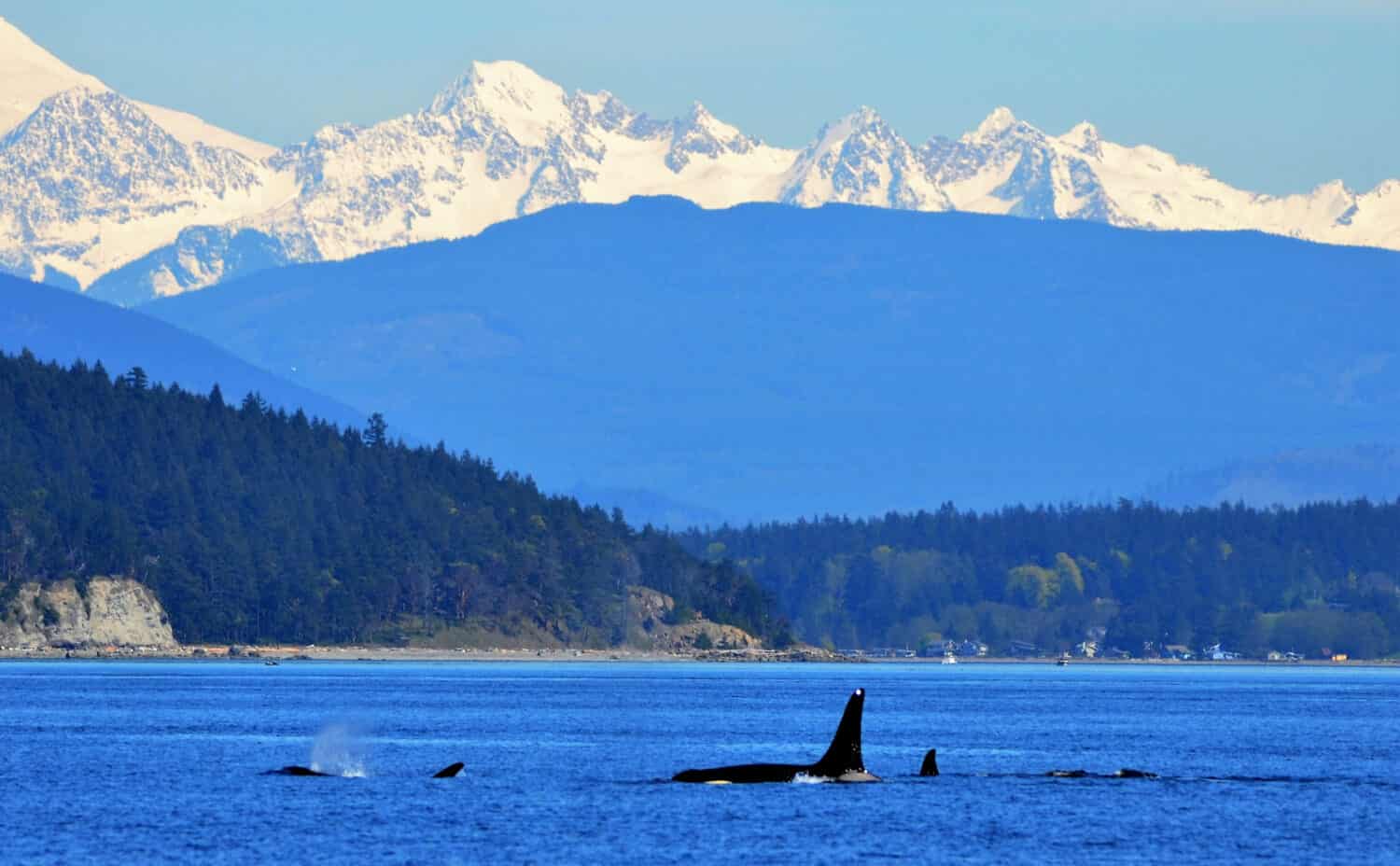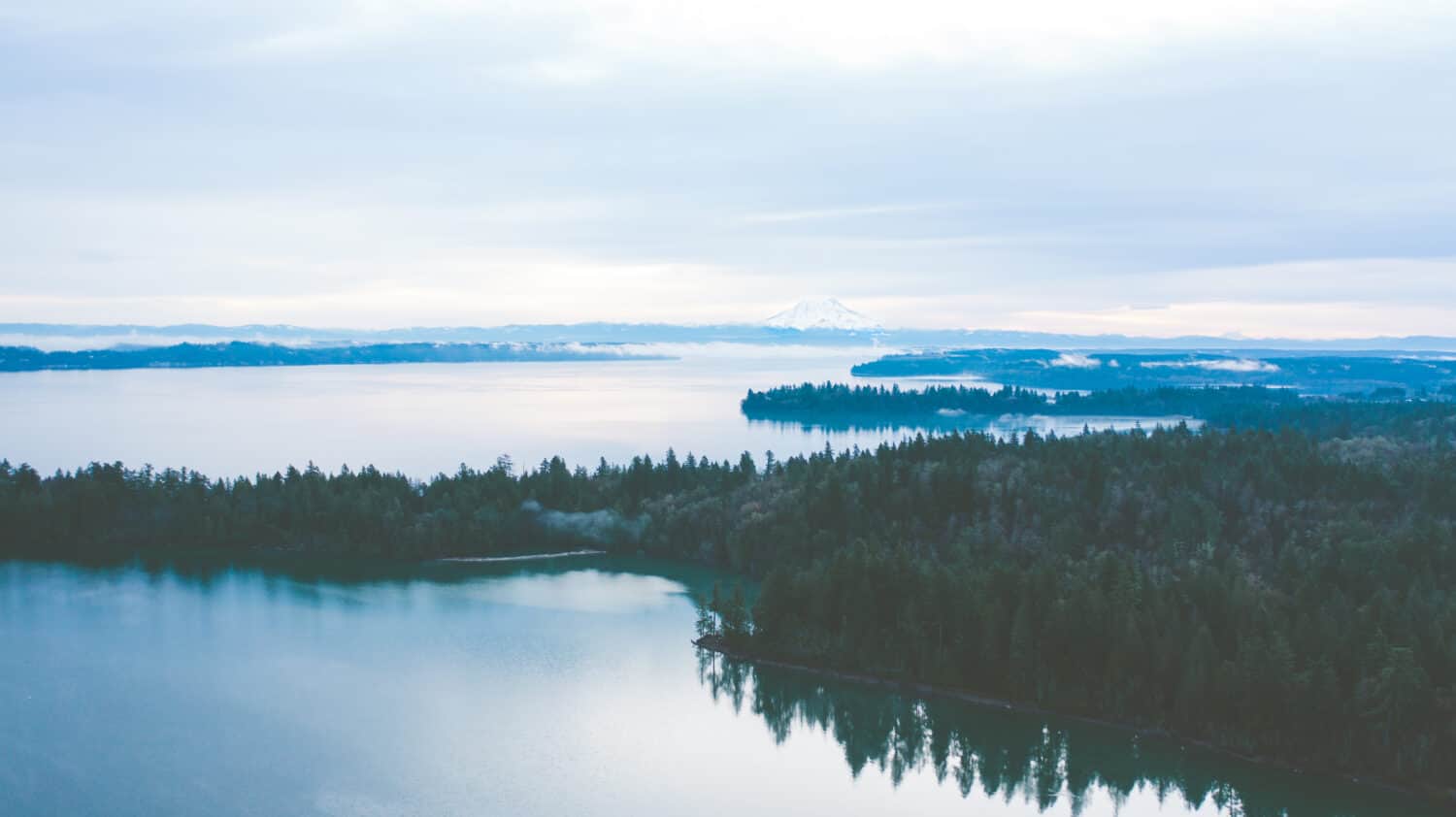Puget Sound is one of the most important ecological features of Washington State. This unique estuarine environment is home to a complex, thriving ecosystem that comprises thousands of plant and animal species. The valuable and varied habitat that it provides is quite large, spanning about 100 miles in overall length and forming almost 1,400 miles of coastline.
The tidal change in Puget Sound is quite large, varying between 10 and 12 feet depending on the distance from the inlet at the Salish Sea. Perhaps counterintuitively, the largest variation in depth comes at the sound’s southernmost point — far from the inlet. These tidal changes are incredibly important to the characteristics of the sound’s waters, affecting everything from temperature and salinity to flow rate and dissolved oxygen levels.
The sound is made up of a long and winding network of ancient troughs and its depth can vary wildly in different parts. While the average depth of Puget Sound is about 230 feet (70 m), its measures about 938 feet deep (286 m) at its lowest point near Point Jefferson. These drastic changes in depth throughout Puget Sound are due to the way in which the basin formed long ago.

Though the sound averages about 230 feet in depth, it is about four times that deep at its lowest point!
©Marina Poushkina/Shutterstock.com
How Did Puget Sound Form?
The formation of the sound is long and complicated, owing to the dramatic and shifting nature of the Earth’s surface. Beginning nearly 100 million years ago, during the Mesozoic Era, several large land masses called terranes began colliding with and joining the North American continent. These collisions added many miles to the continental coastline and were directly responsible for the formation of the region’s major geological features.
As plates shifted and terranes continued pushing against each other, they formed the San Juan Islands, the Olympic Mountains, and ultimately the basin that would later become Puget Sound. Most of these dramatic formations occurred during the Pleistocene Epoch, or Ice Age, when massive glaciers were expanding and contracting over much of the region. Some parts of the glacial ice were more than a half-mile thick!
Much later, around 15,000 years ago, the Ice Age began to reach its end and the glaciers began to fracture and melt away. The moving glacial fractures, called lobes, moved in different directions, leaving behind huge volumes of sediment. As the water from the melting glacial lobes traveled beneath the moving ice, it cut out the rest of the valleys that concluded the major formation of the sound.
Ecology of Puget Sound
In the many thousands of years between the end of the Ice Age and the modern day, countless plants, animals, and fungi shaped the environment in and around Puget Sound. The fossil record in the region is large and shows that among the many organisms that lived in the region were mammoths, bison, mastodons, and caribou. Collectors have also found a variety of plant fossils, as well as those of aquatic animals like salmon, shellfish, snails, and cephalopods.
Life in Puget Sound is just as varied today as it ever was. Dozens of kelp species provide food and cover to a multitude of aquatic animals. Urchins, crabs, eels, and sea stars creep the rocks and floors of the estuary while herring, salmon, sharks, and more swim through the waters above. Anemones, bivalves, and other small invertebrates fill the ephemeral tide pools that dot the shores during minus tides. Even large marine mammals like dolphins and whales move through the sound’s deeper waters.

Due to its massive volume and complex water characteristics, Puget Sound is home to an incredible diversity of wildlife. Many
fish
and invertebrates inhabit its depths, and even large marine mammals like whales, orcas, and dolphins can be seen in open water.
©JSim2018/Shutterstock.com
Human Effects on the Sound
Humans play a large part in the ecology of the sound as well, having built several major cities along the edge of the sound. Seattle, Tacoma, Everett, and Olympia are just a few of the largest ones, with many smaller cities and townships nearby. As of 2014, more than half of all people in the state lived in the 12 counties that are situated on the Puget Sound coastline.
Locals and tourists interact with and rely on Puget Sound on a daily basis for food, transport, and recreation. With cities and populations continuing to grow, so are concerns about the health of the sound’s ecosystems. Runoff from busy streets, farms, roofs, and lawns carries fertilizers, metals, and automotive fluids into nearby waterways. Wastewater from commercial and residential areas can leach pathogens into soils, drainage ditches, and waterways. All of these, whether directly or indirectly, eventually make their way toward the sound.

As of 2014, nearly 70% of Washington State’s population lived in the cities and towns in close proximity to Puget Sound. Pollution from these settlements often ends up degrading the quality of the sound’s water and harming the wildlife within it.
©iStock.com/jarenwicklund
Efforts continue all the time to reduce the amount of human trash and other pollutants that make it into delicate ecosystems and harm native wildlife. However, the ways in which civilization forces people to interact with their world are, at their very core, the source of these problems. While many are hopeful that these issues can be addressed, what the future holds for the ecology of the sound is uncertain.
Where is Puget Sound Located on a Map?
Puget Sound can be found in the Pacific Northwest, is an inlet of the Pacific Ocean and a significant component of the Salish Sea. It gracefully graces the northwestern coast of the state of Washington in the United States.
Here is Puget Sound on a map:
Thank you for reading! Have some feedback for us? Contact the AZ Animals editorial team.








